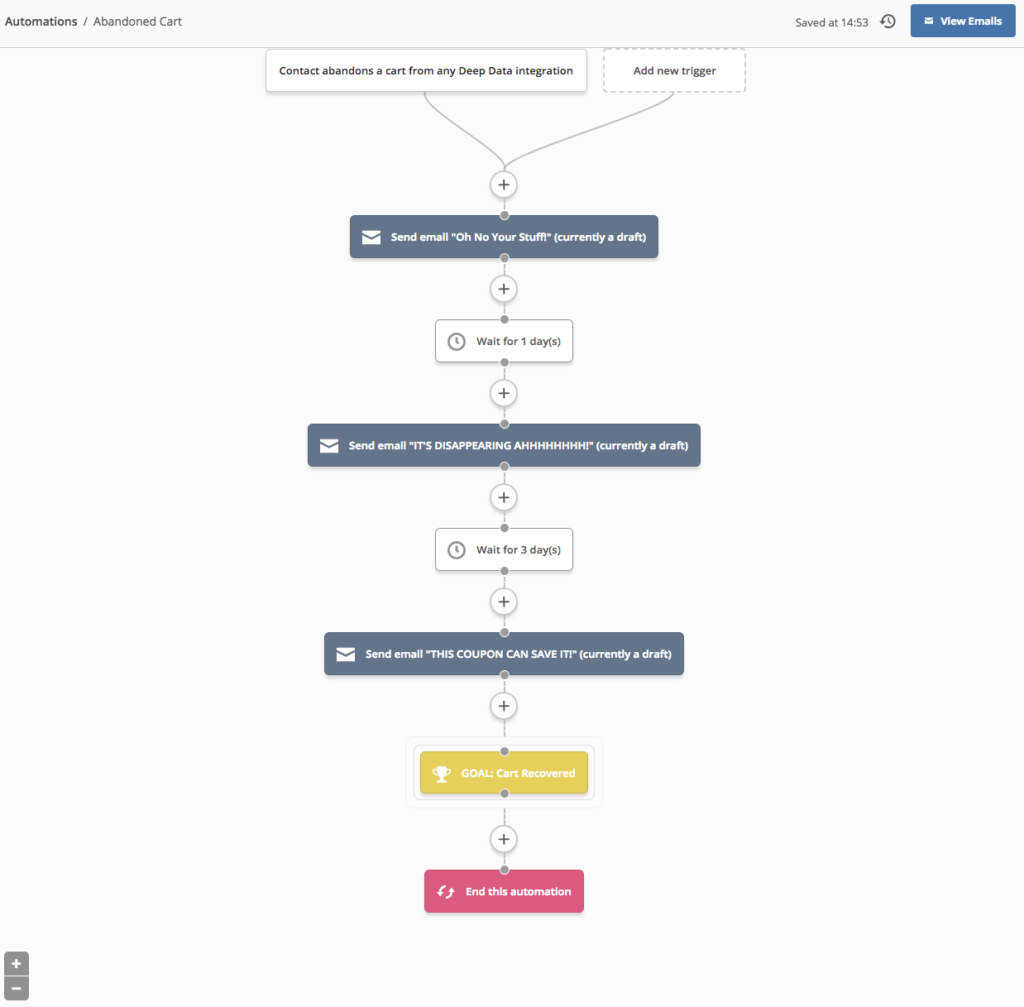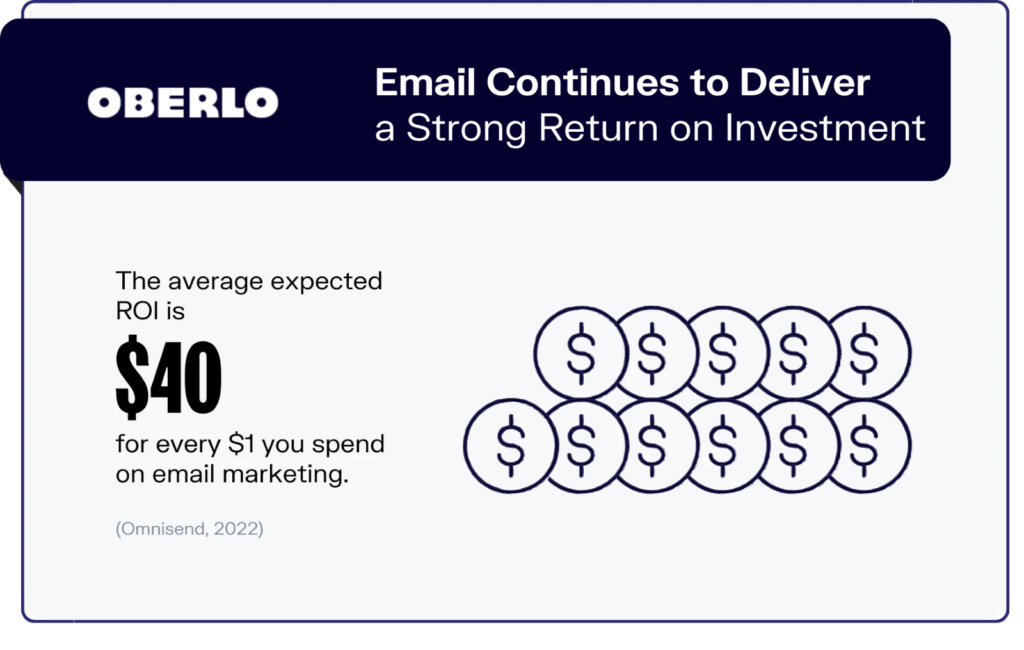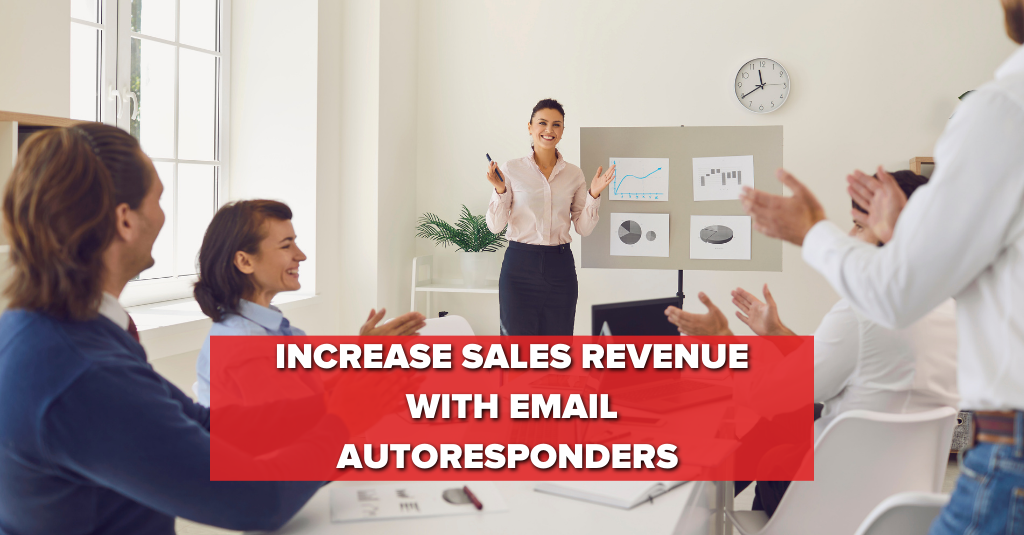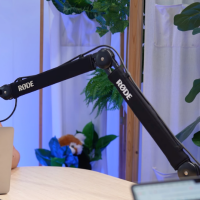Are you missing out on potential sales because your follow-up game is weak? With the average person receiving 121 emails per day, it’s crucial to have a system in place to keep your message at the forefront of your subscriber’s minds. And that’s where email autoresponders come in. But how do you know if your autoresponder strategy is up to snuff? And what should you include in your email series to make the biggest impact? In this blog, we’ll answer these questions and show you how to create a powerful email autoresponder series that drives results.
In this article, you’re going to learn:
What is an Email Autoresponder?
An email autoresponder is an automated email message that is triggered to be sent to an email recipient after a specified action has taken place. This action can be anything from subscribing to a newsletter, downloading a lead magnet or abandoning a shopping cart. The purpose of an email autoresponder is to provide information, offer support, or promote a product or service in a convenient and personalised manner.
With an email autoresponder, businesses can streamline their communication and build stronger relationships with their audience. Autoresponders are programmed to send out pre-written emails in response to specific actions, freeing up time for business owners and enabling them to focus on other aspects of their business.
They offer the ability to deliver a series of emails at predetermined intervals, helping to keep the audience engaged and informed about the business and its offerings. Whether it’s a welcome message for new subscribers, an educational series for new customers, or a promotional offer for repeat customers, email autoresponders provide a powerful tool for businesses looking to generate more sales.

This is an example of an email autoresponder sequence that we use at RedPandas. Email autoresponders can be combined to form a sequence, so that a set of emails sends over time, depending on the user’s actions. As you can see, there are several steps involved in this example, and emails are sent based on certain conditions, such as the time and date. Autoresponder sequences can also be created on other conditions as well. Let’s delve into that below.
Types of Email Autoresponders
Email autoresponders come in various forms, each with unique features and benefits. Some of the most common types of email autoresponders include:
- Welcome Autoresponder
- Abandoned Cart Autoresponder
- Lead Nurturing Autoresponder
- Post purchase Autoresponder
- Lead Magnet Autoresponder
Welcome autoresponder
This type of autoresponder is triggered when a new subscriber joins your email list. It serves as an introduction to your brand and helps establish a relationship with your new subscriber.

Some of the pros include:
- Helps establish a positive first impression with new subscribers
- Sets expectations for future communications
- Can be a valuable tool for onboarding new customers or clients
Some of the cons include:
- Can come across as impersonal if not customised appropriately
- May not effectively address the needs and interests of all subscribers (unless you’ve first categorized the opt-in options)
- May not provide enough value to encourage subscribers to remain engaged with your brand
Abandoned cart responder
Abandoned cart autoresponders is an email sent to subscribers who have abandoned their cart on your website and not yet purchased. The goal of this type of autoresponder is to generate purchases from your subscribers.


Some of the pros include:
- Helps recover lost sales and increase conversion rates
- Can be a valuable tool for e-commerce businesses
- Offers the opportunity to address any objections or concerns that may have led to cart abandonment
Some of the cons include:
- Can come across as pushy or salesy if not customized appropriately
- May not effectively address the root cause of cart abandonment.
Lead nurturing autoresponder
Nurture autoresponders are a series of emails that are sent over a period of time to educate and build trust with your subscribers. This type of autoresponder is particularly useful for businesses that sell complex products or services. Lead nurturing autoresponders work best as sequences, with multiple emails being used as opposed to one.
Some of the pros include:
- Provides a consistent and personalised experience for subscribers
- Helps build relationships with subscribers over time
- Can educate subscribers and keep them engaged with your brand
- Helps increase sales and revenue
Some of the cons include:
- Can be time-consuming to set up and manage
- May not effectively address the needs and interests of all subscribers
- Can become repetitive or lose effectiveness if not regularly updated and refreshed
Post purchase autoresponder
This type of autoresponder is triggered after a customer makes a purchase from your website. It can be used to provide customers with order confirmations, delivery updates, and other relevant information.

Some of the pros include:
- Keeps the customer informed on information like order confirmation, when it will ship and how to track that shipment, and how to access the receipt
- Allows them to easily access customer service confirmation information
- Sets expectations and lets them know what they should expect next
Some of the cons include:
- Requires an integration where the data can feed from your online store through to your email
Lead magnet autoresponder
Lead magnet autoresponders are sent after someone opts in to receive a lead magnet, such as an e-book or webinar. This type of autoresponder can help to further educate and qualify your leads.
Some of the pros include:
- Helps to ensure customers receive the lead magnet they opted in to download.
- Can be used to upsell or cross-sell related products and services to customers
- Can be used to further educate by providing links to your website
Some of the cons include:
- If the download process is difficult or if it fails due to technical issues or glitches, it will damage the user experience and lead to subscriber frustration.
Which type is best?
There is no best type of email autoresponder. Each comes with its own benefits and downsides, and it’s up to you to decide which is best for your business based on your objectives and the pros and cons that each type offers. It’s also worth keeping in mind that there are other types of email autoresponders you can create outside of the types we have already covered. Ultimately, creating and using a combination of email autoresponders is likely the best approach.
Benefits of Using Email Autoresponders
Email autoresponders can bring a multitude of benefits to any business that implements them into their email marketing strategy. Some of the key benefits of using email autoresponders include:
- Increased sales
- Increased efficiency
- Improved customer engagement
- Better data collection
- Cost-effective marketing
Let’s delve into each of these.
Increased sales
Autoresponders can help businesses increase sales by automating the process of follow-up emails. For example, an order confirmation autoresponder can be set up to automatically send a series of follow-up emails after a customer has made a purchase, encouraging them to make repeat purchases.

Oberlo found that for every $1 spent on email marketing, you should be able to generate a $40 return.
Increased efficiency
One of the biggest benefits of email autoresponders is their ability to automate the email marketing process. By setting up an autoresponder, businesses can save time and effort by automating the process of sending out emails. This allows businesses to focus on other areas of their operations, while the autoresponder takes care of the email marketing tasks. HubSpot is one of the best software to help you achieve this.
Improved customer engagement
Autoresponders can help businesses engage with their customers in a more meaningful way. By sending out relevant, targeted emails at specific times, businesses can build stronger relationships with their customers and improve customer engagement.
Better data collection
Autoresponders can also help businesses collect valuable data on their customer behaviour. By tracking the success of different autoresponder campaigns, businesses can gain insights into what works best for their customers, allowing them to make data-driven decisions about their email marketing strategy.
Cost-effective marketing
Compared to other forms of marketing, email autoresponders are relatively cheap to set up and maintain. This makes them a cost-effective solution for businesses that want to reach a large audience with their marketing message.
The benefits of using email autoresponders are numerous, and businesses of all sizes can benefit from incorporating them into their email marketing strategy. Whether you’re a small business looking to improve customer engagement, or a large enterprise looking to automate your email marketing process, email autoresponders can help you achieve your goals.
Best Practices for Email Autoresponders
We recommend six best practices when creating email autoresponders:
- Consider personalised videos
- Add clickable links and content recommendations
- Setting expectations
- Segment your email list
- Keep the subject line clear and concise
- Test and optimise
Consider personalised videos
Did you know that merely mentioning the word video in an email subject line increases the CTR by 13%?
One to many videos in emails are great for establishing trust especially when they feel authentic and personalised. It should give the impression to your contact that you made it just for them. However, it’s meant to be used more than once, saving you time while still having the positive impact that comes with personalisation.
For example, one thing you might do to make it appear personalised without having to re-record a new video for every new customer is instead of saying the contact’s name in the video, you would use words like “you” to address them.
Add clickable links and content recommendations
Add clickable links and content recommendations so the user can continue their journey with your brand. It’s so easy to recycle some useful assets and relevant blog articles into an autoresponder email. By providing 3-5 links, interested customers will be moving through the customer lifecycle journey without you doing a thing.
Set expectations
It’s the perfect time to be transparent and tell customers exactly how many emails they can expect every month, how long you will take to respond to a request from them, and how long they can expect to wait for the next callback.
Segment your email list
Segmenting your email list allows you to send targeted and personalised messages to specific groups of subscribers. This leads to higher engagement and conversions.
Keep the subject line clear and concise
The subject line is the first thing your subscribers see in their inbox, so it should grab their attention and clearly convey the purpose of the email.
Regularly test your email autoresponders and make data-driven decisions to optimise their performance. This includes split testing different subject lines, sending times, and content to see what resonates with your audience.
You’ll want to use analytics to track the success of your email autoresponders, such as open rates, click-through rates, and conversions. Use this data to make informed decisions about what changes to make in the future.
So, what’s next?
If you’re interested in using email autoresponders to increase revenue, then you’re probably interested in other methods that can result in increases in sales and revenue. Some of the below articles delve into how to increase sales revenue:












